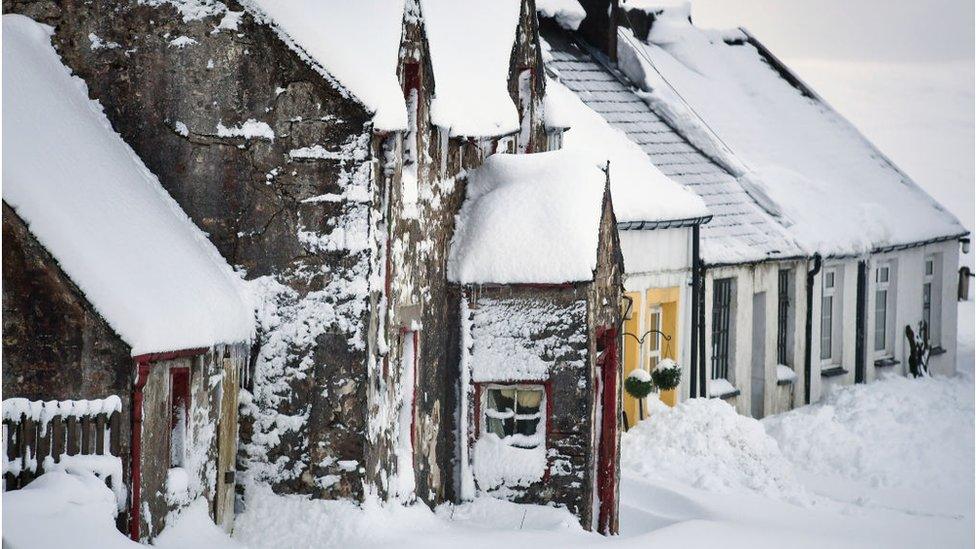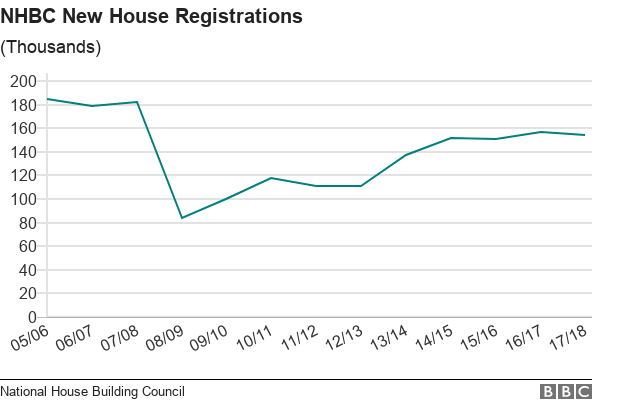House building slumps as Beast from the East hits economy
- Published
- comments

The number of new houses registered to be built in the first three months of the year fell by 14% due to the harsh winter weather, new figures show.
Statistics from the National House Building Council (NHBC) revealed the drop - the worse percentage fall in one three month period since 2012.
Alongside poor retail figures, many economists now fear that the first quarter GDP growth figure to be published later this morning will be weak.
The NHBC said that although the overall trend for new housebuilding over the decade was up, the recent harsh winter weather dragged down the annual number of new builds for 2017-18 by 2%.
The annual fall reveals not just the impact of the Beast from the East in February and March but also how tough the government will find hitting its own target of building 300,000 new homes a year.
Frozen ground hit the number of new home builds, says the National House Building Council
The NHBC - which registers 80% of all new private and affordable homes built in the UK including most social housing - said that 155,000 new homes were registered in 2017-18.
That would make the total number of new houses being built in the region of 190,000, more than 100,000 below the government target for England alone.
The government insists that when "conversions" are included - such as office blocks changed to housing use - the number of new homes built every year is above 200,000.
The NHBC said that up to a month of construction time was lost because of snow and ice, which it described as "exceptional".

"By far the biggest influence was the Beast from the East, the extreme cold weather that we had," said Steve Wood, chief executive of the NHBC.
"That was very disruptive. I was on site and nothing was happening, the ground was frozen and there was a biting wind.
"Builders typically lost something like 30 days production - that has an impact on registrations, what's coming through the pipeline. That is the main reason we saw the slowdown in the first quarter."
But even accounting for the poor weather, Britain's housebuilders are still not building as many houses as before the financial crisis.
Mr Wood said that a lack of bricklayers was one of the biggest problems and that new methods of building houses - such as modular units put together in factories before being moved to construction sites - would have to be promoted more rapidly.
"To get to the 300,000 would require something like an additional 25,000 bricklayers," he said.
"That's not going to happen so we need to change the way that we build houses and embrace modern methods much more fully."
Although some parts of the UK such as the north east of England and Wales saw the number of houses built over the year rise, the overall figures were dragged down by sharp falls in places like London.

Theresa May has said that people were "right to be angry" about the lack of affordable homes and the government was pushing reforms in the market around issues like planning to increase the numbers.
- Published5 March 2018

- Published4 March 2018
